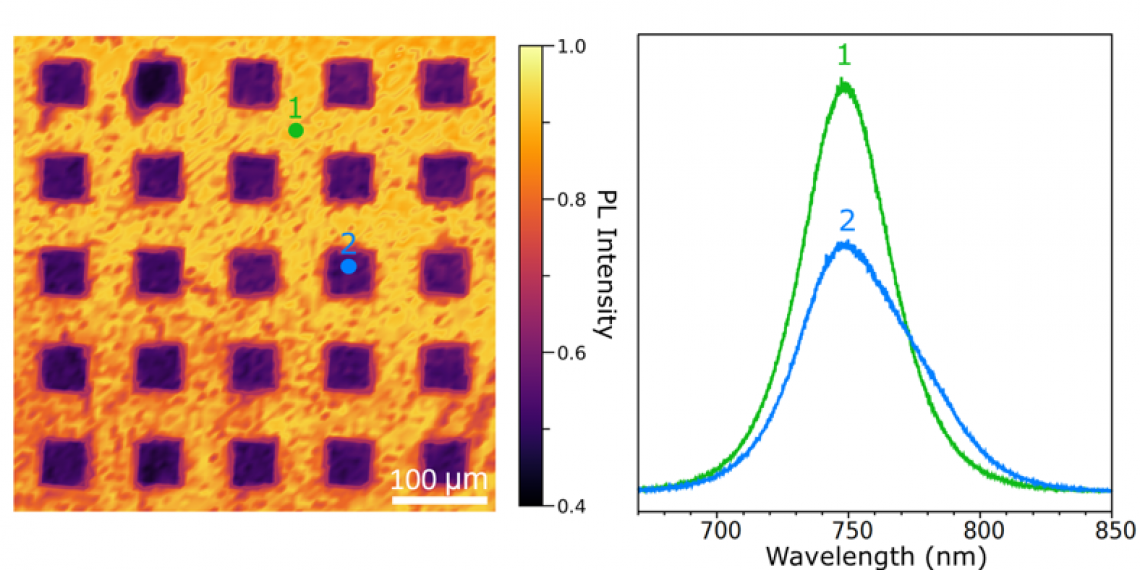
Halide perovskite solar cells are the subject of intense research interest due to the attractive properties of perovskite; high carrier mobilities, large absorption coefficients, tuneable bandgaps and long carrier diffusion lengths. One of the challenges in any solar cell design is how to get the charge carriers efficiently out of the device. To aid charge extraction, electron and hole extraction layers are routinely incorporated into the device stack.
One promising material being investigated as a hole extraction layer are vertically aligned carbon nanotubes (VACNTs). The VACNTs are grown in a grid pattern of “towers” atop the ITO electrode in order to achieve improved charge extraction while maintaining high optical transmission through the ITONACNTs.
Photoluminescence (PL) is proportional to the number of charge carriers in the perovskite and, therefore, is sensitive to charge transfer into adjacent layers. This makes PL-based techniques invaluable for investigating the performance of new extraction layers. In this application note, the hole transfer into a VACNT based hole extraction layer is imaged using steadystate and time-resolved confocal PL microscopy with an Edinburgh Instruments RMS1000 Confocal Raman & PL Microscope.
An array of VACNT towers were grown on an ITO coated glass substrate using photo-thermal chemical vapour deposition (PTCVD) and a layer of mixed halide Cs0.05FA0.79MA0.16PbI2.4Br0.6 perovskite was spin-coated on top. The substrate was mounted onto a microscope slide using double sided tape which was then secured to the motorised stage of the RMS1000 Confocal Raman & PL Microscope. The RMS1000 was equipped with a 532 nm CW laser for spectral acquisition, an EPL-450 picosecond pulsed diode laser for timeresolved, 600 gr/mm diffraction grating, back-illuminated CCD camera, time-correlated single photon counting (TCSPC) lifetime electronics, and a high-speed PMT lifetime detector.

